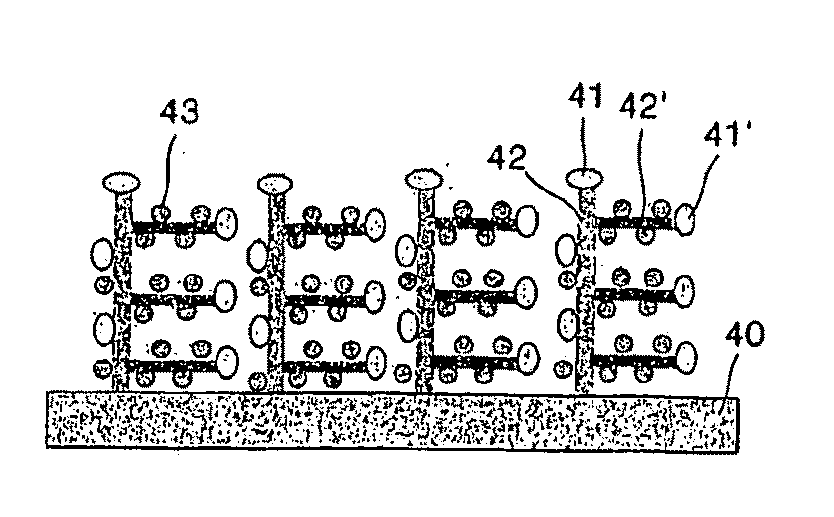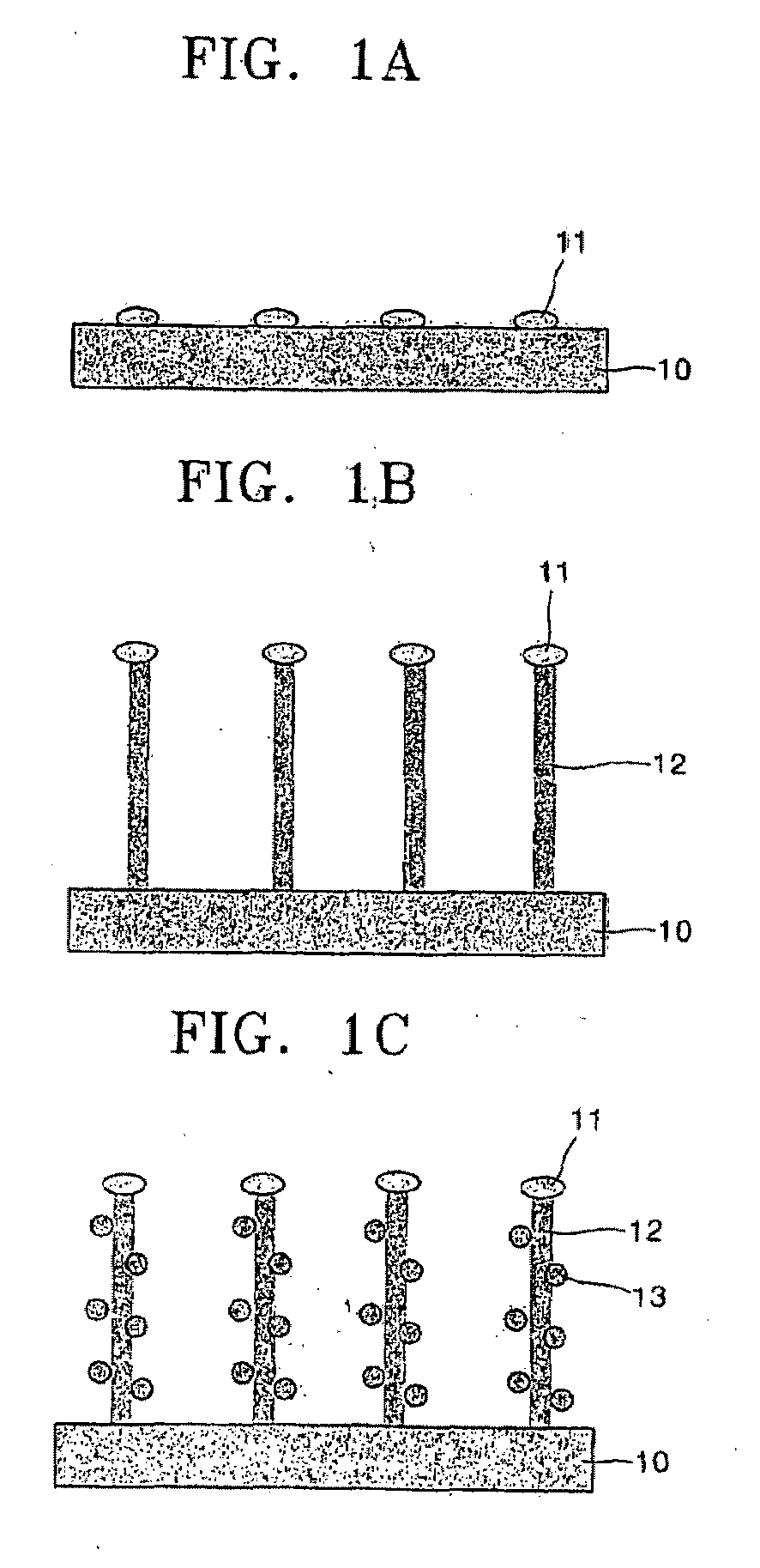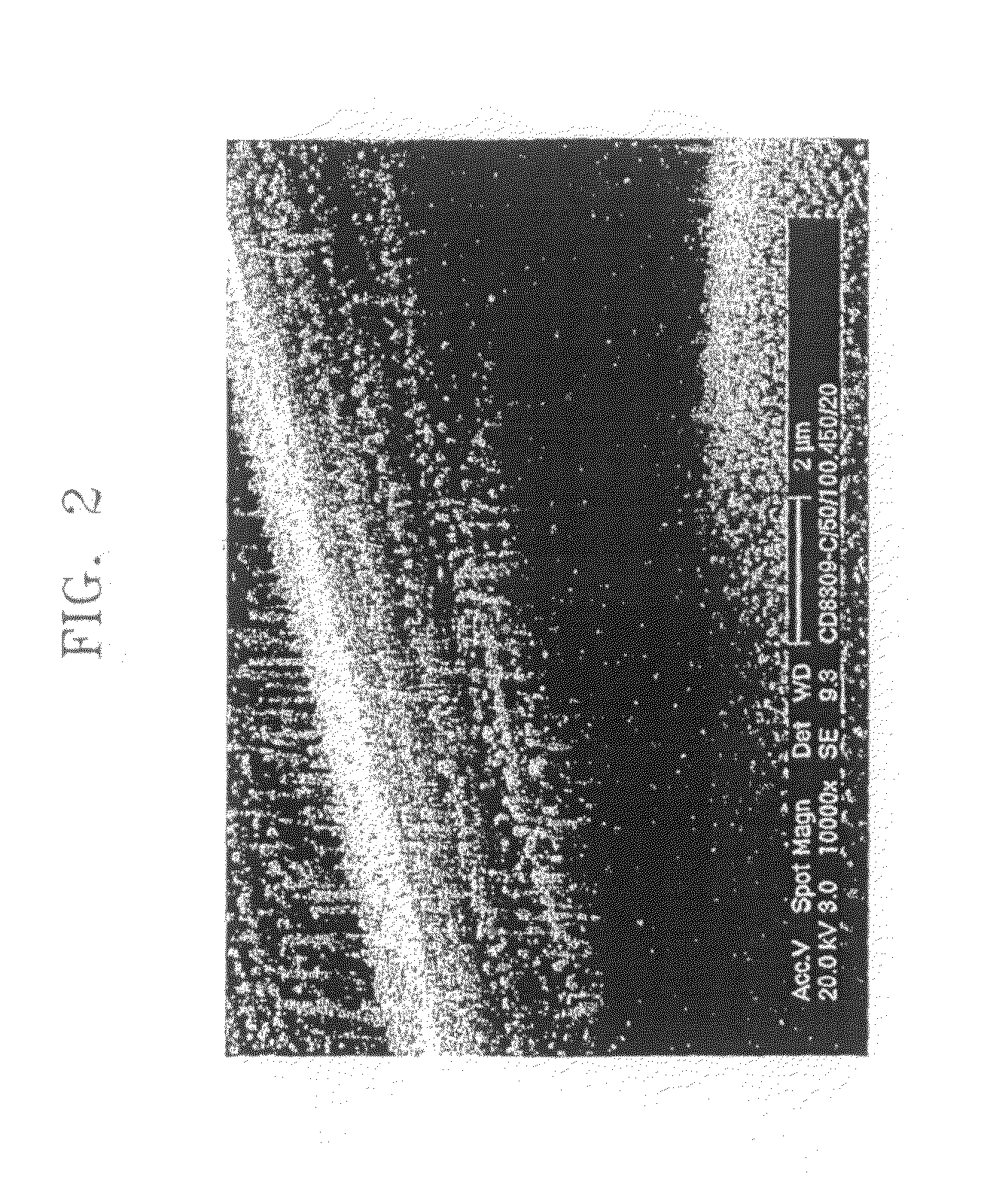Carbon nanotube for fuel cell, nanocomposite comprising the same, method for making the same, and fuel cell using the same
a fuel cell and carbon nanotube technology, applied in the direction of cell components, final product manufacturing, sustainable manufacturing/processing, etc., can solve the problems of carbon nanotube nucleating catalyst particles, and insufficient surface area and electrical conductivity of carbon backing substrates, so as to achieve high gas-reaction efficiency and improve efficiency
- Summary
- Abstract
- Description
- Claims
- Application Information
AI Technical Summary
Benefits of technology
Problems solved by technology
Method used
Image
Examples
example 1
Fabrication of Aligned Primary Carbon Nanotubes
[0224]Ti was sputtered on carbon paper (total thickness: about 0.5 mm) to form an interface layer Ti with a thickness of about 7 nm, and then without exposure to air, a Ni layer of about 10 nm thickness was formed by sputtering. Then, a DC plasma CVD process was performed to grow carbon nanotubes at 700° C. for 20 min. During the CVD process, an electric field of about 450V was applied to align carbon nanotubes.
[0225]A mixed gas of ammonia (NH3) and acetylene (C2H2) was used in the CVD process, with a total NH3 and C2H2 pressure maintained at about 3 torr.
example 2
Electrodeposition of Ni Catalyst
[0226]Electrodeposition of Ni particles was performed using a mixed solution of a 45 g / L of NiCl2, 300 g / L of NiSO4 and 45 g / L of H3BO3 at 20° C. The deposition potential used was −1.2V vs saturated calomel electrode (SCE) produced from Aldrich and the loading was controlled by the total charge applied.
example 3
Supercritical Fluid Deposition of Ni Particles
[0227]A 10 mg of nickel precursor, nickel (II) 2,4-pentanedionate was loaded in the 10 mL capacity high pressure stainless steel reaction cell in which 1 cm2 of carbon paper having the carbon nanotube structure according to the present invention had been placed. Following the precursor loading, the valve V1, illustrated in FIG. 8, was closed while the valves V2, V3 and V4 illustrated in FIG. 8 were opened and hydrogen gas at a pressure of 3.0 atm was allowed to flow through the system for 5 min to expel the air inside.
[0228]After hydrogen loading, the valves V2 and V3 were closed to evacuate the reaction cell, and then the valve V4 was closed while V1 was opened to charge the 100 mL H2—CO2 mixing vessel with about 80 atm of CO2. After the H2 and the CO2 were mixed, the valve V3 was opened forcing the mixture into the reaction cell. The valves V1 and V3 were then closed to allow the dissolution of the Ni precursor in the CO2 solution. To ...
PUM
| Property | Measurement | Unit |
|---|---|---|
| diameter | aaaaa | aaaaa |
| diameter | aaaaa | aaaaa |
| angle of inclination | aaaaa | aaaaa |
Abstract
Description
Claims
Application Information
 Login to View More
Login to View More - R&D
- Intellectual Property
- Life Sciences
- Materials
- Tech Scout
- Unparalleled Data Quality
- Higher Quality Content
- 60% Fewer Hallucinations
Browse by: Latest US Patents, China's latest patents, Technical Efficacy Thesaurus, Application Domain, Technology Topic, Popular Technical Reports.
© 2025 PatSnap. All rights reserved.Legal|Privacy policy|Modern Slavery Act Transparency Statement|Sitemap|About US| Contact US: help@patsnap.com



